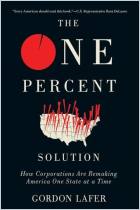加入 getAbstract 阅读摘要

加入 getAbstract 阅读摘要
Marc Levinson
The Great A&P and the Struggle for Small Business in America
Hill and Wang, 2011
看看什么内容?
How did big US chain stores get that way? It’s as simple as A&P.
Recommendation
Economist and historian Marc Levinson documents how New York’s Hartford family turned a mid-19th century tea shop into the $1 billion Great Atlantic & Pacific Tea Company (A&P), changed US retailing, invented chain marketing and – then – ultimately let A&P wither and die. Levinson’s well-researched, detailed account explores how the Hartfords’ innovative marketing strategies sparked a national revolt against chain stores. getAbstract suggests his opus to students of economics and marketing, especially those young enough to have never shopped in an A&P.
Summary
About the Author
Marc Levinson, former finance and economics editor of The Economist, wrote The Box: How the Shipping Container Made the World Smaller and the World Economy Bigger.

























Comment on this summary